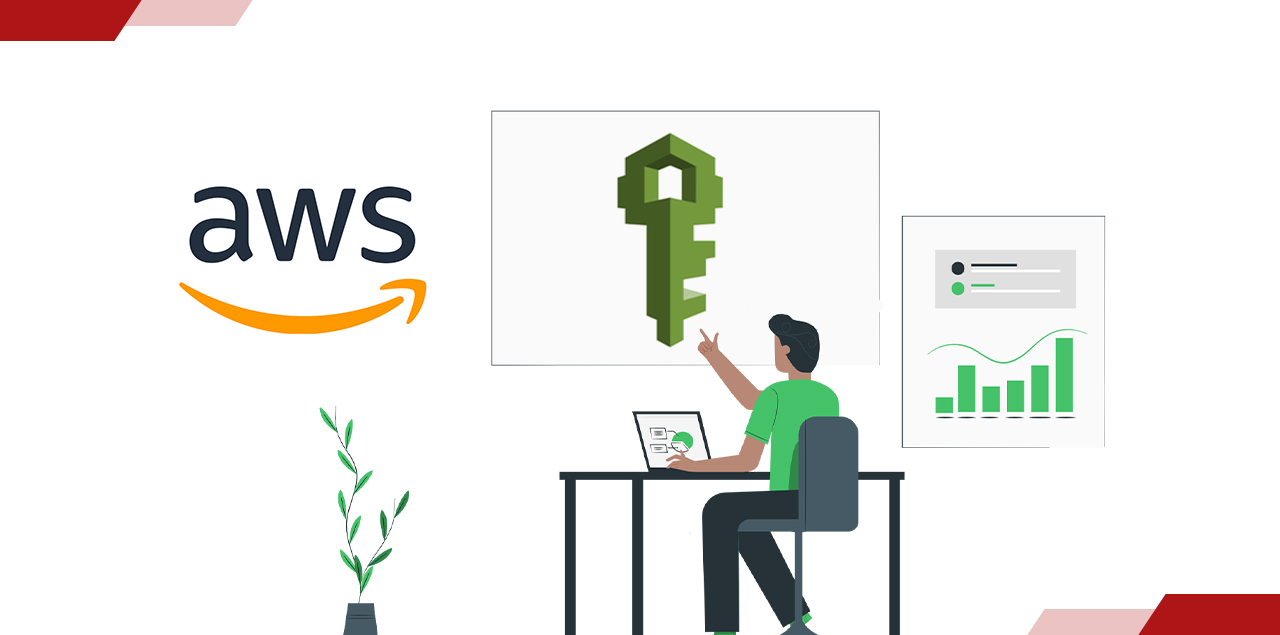Amazon Web services (AWS) cloud provides a secure, virtual environment to deploy their applications. As compared to an on-premise deployment, AWS users can deploy their applications more securely and at a very much lower cost. AWS provides its users with many security services, but AWS Identity and access management is one of the most crucial ones and most widely used.
Identity and access management (IAM) helps users securely access and manage AWS resources and services. IAM helps and aids users in securely controlling access by creating users and groups, assigning specific permissions and policies to specific users, setting up multi-factor authentication for additional security, and much more.
This article will cover the fundamentals of AWS IAM, its key features, and some unique benefits to provide you with a bird’s eye view of AWS Identity and access management (IAM).
One of the biggest roadblocks to cloud adoption by businesses and companies is cloud security scrutiny. AWS IAM addresses this problem by following a granular approach while granting permissions and providing access in the cloud environment. It essentially means that IAM enables its users to control access to AWS service APIs and specific resources. AWS IAM also gives its users the option to control who can use their resources and in which ways. All this and many other features undeniably make using AWS extremely secure.
How Does AWS IAM Work?
A typical IAM workflow consists of the following elements:
Principal – An entity that can perform actions on AWS resources. It can be a user, group, role or application.
Authentication: The process of verifying the principle of trying to use an AWS resource.
Request: The principal sends a request is sent to AWS by the principal specifying what actions to perform and what resources to use.
Authorization: IAM authorizes requests by matching all parts by a relevant matching policy. AWS approves all the actions after authentication and authorization.
Actions: A mix of activities view, create, edit or delete a resource.
Resources: An entity that you can work with or work on to satisfy the business need.
To put it into simple words, we have listed below some core functionalities of Identity and Access Management Tools
Manage user identities
IAM tools can be used as a single repository or directory to create, modify, delete users or even integrate with other directories if need be. Identity and access management tools can also be used to create special access for particular purposes for users.
Provisioning/de-provisioning users
Organizations can use IAM to specify which tools and access levels to give to what users as per the business requirements. IAM tools enable the IT departments to grant access and set users’ provisions by role, departments, or other groupings variable as per the business requirements. IAM also allows your organization to quickly remove ex-employees’ access to ensure provisioning also works in reverse.
Authenticating users
IAM system enables user authentication by confirming that they are who they say they are. The system achieves this feat through authentication like multi-factor authentication (MFA) and, preferably, adaptive authentication.
Authorizing users
Access Management in IAM ensures that the system grants the right users access to tools and the same levels as per their entitlement. The system can also divide the users into groups or roles so if they require similar privileges.
Reporting
IAM tools regularly generate reports on critical actions taken and done like login time, systems access, and type of authentication on the platform. It helps ensure compliance and mitigate security risks.
Single Sign-On
Single Sign-On tools in IAM enable users to authenticate themselves only through one portal instead of using many different resources. Once authenticated, the IAM system acts as a single source of identifier for the other resources available to the user, removing the requirement for the user to remember several passwords.
Some Key features of IAM
IAM secures all your AWS services and resources, and the best thing about AWS IAM is that it is entirely free of cost. AWS account offers an IAM feature at no additional charge. Now, let’s move on to some other nifty features of IAM.
- Authentication – IAM authenticates resources, people, services, and apps within an AWS account, which means that IAM allows the creation and management of different identities such as users, groups, and roles.
- Authorization – IAM provides access management through two primary components: Policies and Permissions.
- Permissions are a set of specific rules. Each policy is unique as they grant specific permissions that cover various use-cases. On the other hand, Permissions enable users to perform actions on AWS resources and services.
- Permissions follow a granular approach – With the help of IAM, you can fine-tune the process of granting permissions as per your business needs. You are in total control of which permissions you want to give to what teams/users.
- Shared Access to AWS account – Organizations with multiple AWS accounts can now share access between them without needing to share their credentials by simplifying multi-account access within one organization.
- Identity federation: This feature in AWS IAM allows you to seamlessly combine access to your AWS account with other identity providers such as G Suite etc.
Why IAM?
AWS IAM helps IT administrators manage AWS user identities and their varied access to AWS resources. With the help of IAM, AWS users can be created and assigned individual security credentials (e.g. passphrases, SSH keys, MFA), granted permission to access AWS, or removed at any time.
In the process of doing this, organizations have granular control over their AWS resources, different levels of access to it, and the actions authorized users can perform on these resources.
It essentially results in a more secure and efficient environment for AWS users to use AWS resources. With a plethora of fully-featured resources, it makes total sense to have the ability to manage access to them to ensure safety and maximum optimization.
IAM Implementation Strategy
Ideally, IAM Solutions should have zero-trust principles such as least privilege access and identity-based security policies.
- Central identity management
Zero trust principles manage access to resources at the initial identity level, meaning you have a centralized managed system of identities. It also means that you can easily synchronize your IAM with other user directories.
- Secure access
IAM should confirm the Identity of those who are logging in. It implicates the usage of MFA or a combination of MFA and adaptive authentication to consider the context of the login attempt, i.e. Time, Place, IP address etc.
- Policy-based control
The system gives access and authorization to users to perform the task they are required to do and no more access. The system grants access to resources as per the role’s requirement, no more, no less. These policies ensure that resources are always secured no matter who accesses them.
- Zero-Trust Policy
Zero-Trust means that organizations do not trust anyone automatically who is trying to access their network, machines, IP addresses, etc. Instead, they treat every user and device as a potential threat and assess the risk first by verifying their identities.
- Secured privileged accounts
Accounts created in access management are not equals. Each account follows provisions that declare that they have specific access to resources as per their roles. The system gives access to privileged resources an extra layer of security and support to act as a gatekeeper for the organization.
- Training and support
All the necessary support and training are provided to users depending on what products they engage with, including users and administrators – and often provide customer service for the long-term health of your IAM installation and its users.
Summing it up
AWS is the biggest cloud solution provider in the world for a reason. AWS identity and access management have rolled out several measures to provide maximum security to ensure its superiority, and IAM is one of the most important ones.
With all its amazing features and unique benefits it provides, it is a little overwhelming, and the learning coverage around IAM lacks the gravity it deserves. We aim to help users like yourself get the most out of topics powered by crisp and to-the-point content through our blogs and article series.
Author – Kartik Bansal




